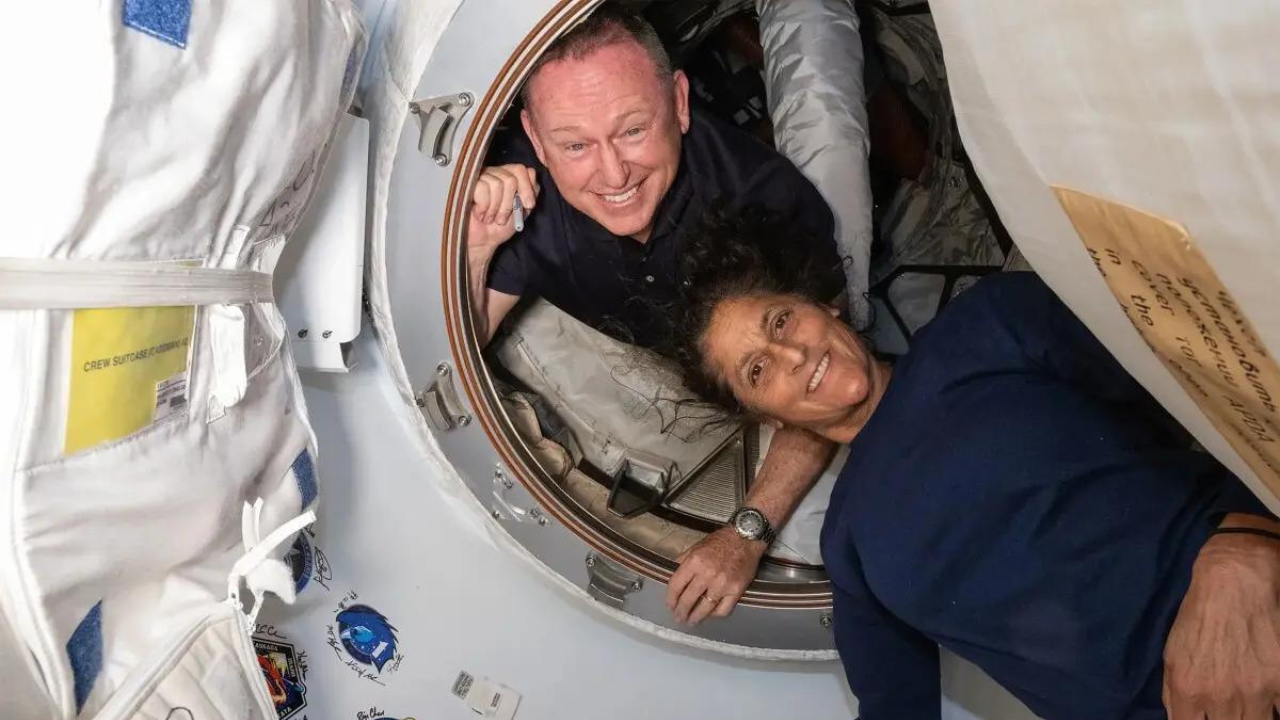[ad_1]
Sunita Williams and Butch Wilmore prolonged stay in space has raised several questions on how the US space agency Nasa will pull off the successful return of both astronauts — who were initially supposed to land on Earth within eight days of the liftoff.
As suspense on their return continues, Nasa shared what would happen if an emergency occurs on the space station.
The American space agency revealed that in case of an emergency Williams and Butch will have to “rapidly depart the station” as Starliner remains the primary option for the duo.
However, Nasa said there is “no urgent need to bring them home” and that it has been “using extra time to understand the spacecraft’s technical issues before deciding on a return plan”.
What technical issues has the Starliner encountered?
The Starliner capsule has faced multiple technical problems since its June 5 launch.
These include five helium leaks, five maneuvering thruster failures, and a propellant valve that failed to close completely. These issues have required extensive mid-mission fixes and additional tests, delaying the planned return of the astronauts.
What will happen if Starliner cannot safely return the astronauts
If Starliner is deemed incapable of safely returning the astronauts to Earth, one option would be to send them back aboard SpaceX‘s Crew Dragon, which is currently docked at the ISS and can accommodate additional astronauts in an emergency.
However, this scenario is considered unlikely as current assessments indicate Starliner can still serve as an escape pod if necessary.
Why is the Starliner mission crucial for Boeing and Nasa?
This mission is the final test needed for Nasa to certify Starliner as a viable spacecraft for transporting astronauts to and from the ISS. Successful certification would make Starliner the second US spacecraft for such missions, alongside SpaceX’s Crew Dragon. This capability is essential for maintaining a continuous human presence on the ISS and supporting future missions.
As suspense on their return continues, Nasa shared what would happen if an emergency occurs on the space station.
The American space agency revealed that in case of an emergency Williams and Butch will have to “rapidly depart the station” as Starliner remains the primary option for the duo.
However, Nasa said there is “no urgent need to bring them home” and that it has been “using extra time to understand the spacecraft’s technical issues before deciding on a return plan”.
What technical issues has the Starliner encountered?
The Starliner capsule has faced multiple technical problems since its June 5 launch.
These include five helium leaks, five maneuvering thruster failures, and a propellant valve that failed to close completely. These issues have required extensive mid-mission fixes and additional tests, delaying the planned return of the astronauts.
What will happen if Starliner cannot safely return the astronauts
If Starliner is deemed incapable of safely returning the astronauts to Earth, one option would be to send them back aboard SpaceX‘s Crew Dragon, which is currently docked at the ISS and can accommodate additional astronauts in an emergency.
However, this scenario is considered unlikely as current assessments indicate Starliner can still serve as an escape pod if necessary.
Why is the Starliner mission crucial for Boeing and Nasa?
This mission is the final test needed for Nasa to certify Starliner as a viable spacecraft for transporting astronauts to and from the ISS. Successful certification would make Starliner the second US spacecraft for such missions, alongside SpaceX’s Crew Dragon. This capability is essential for maintaining a continuous human presence on the ISS and supporting future missions.
[ad_2]
Source link

